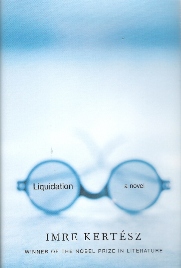"Restless Subtenants"
Imre Kertesz reminds us in his Liquidation about the wonderful power of words: Masses of books, good and bad, of all sorts of genres are dormant within me. Sentences, words, paragraphs, and lines of poetry that, like restless subtenants, unexpectedly spring to life and wander solitarily about or at other time launch into a loud chattering that I am unable to quell ... While editing a world-famous conductor's world-famous memoirs, I chanced upon what may presumably have even been a true sentence: The conductor was complaining that as a result of intensive rehearsals he was suffering from chronic insomnia because he was unable to master the constant orchestral din swirling around in his head.

What Kertesz refers to is an inner environment of texts and words that reading (passionate, involved, intelligent reading) creates in our minds. Documents we read can become "restless subtenants" only if we engage with texts as readers who are curious, critical, and who understand that texts are more than mere conduits of information.
This reminds me of Anselm Strauss and, of course, "The Social Life of Documents." It also reminds me of blogging and the online community of writers and thinkers that I strive to create with my students. The reason I am currently in the process of transforming my classroom into a networked community is because I want my students to learn that texts are not just words that one reads to pass a test or write an essay. I want them to learn that texts accumulate inside us, contribute to who we are, and have the power to create communities of inquiry.
And so, it seems to me that the success of blogging in education will not depend on how well we train teachers or how well we reconfigure the curricula and old, linear modes of thinking. The success of blogging (and by blogging I mean classroom communities of writers) will depend on how quickly we realize that, especially in today's digital age, texts have moved beyond delivering information. They are the means to construct and maintain social groups. They are community builders, in other words, and not mere sources of information. We need to look beyond what Brown and Duguid refer to as "the conduit image."
We have to teach our young students how to create "communities of interpretation." Only then, will those restless subtenants "spring to life and wander."